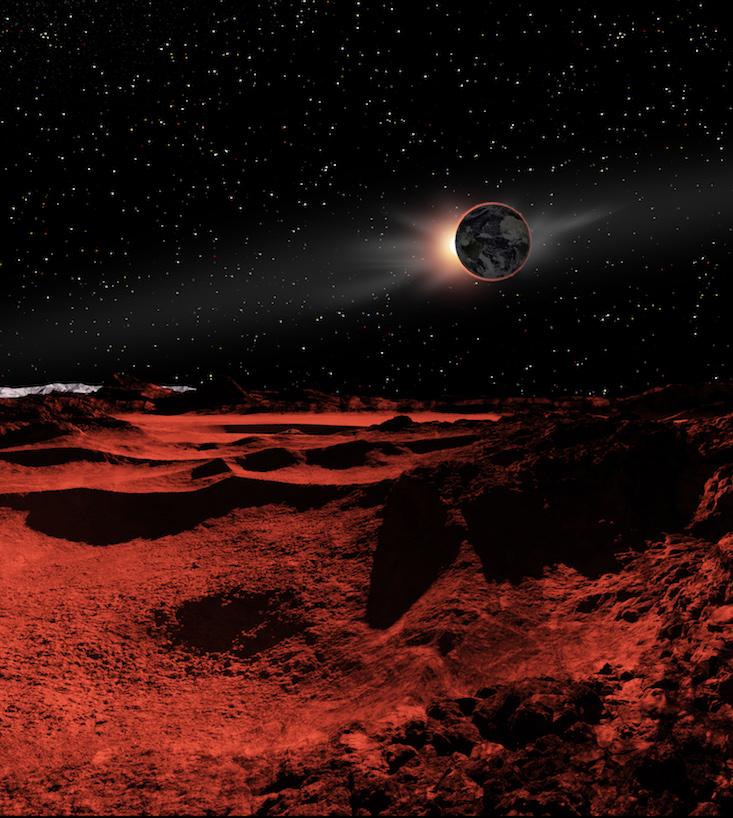
Caleb Scharf wants to take you on an epic tour. His latest book, The Zoomable Universe, starts from the ends of the observable universe, exploring its biggest structures, like groups of galaxies, and goes all the way down to the Planck length—less than a billionth of a billionth of a billionth of a meter. It is a breathtaking synthesis of the large and small. Readers journeying through the book are treated to pictures, diagrams, and illustrations all accompanied by Scharf’s lucid, conversational prose. These visual aids give vital depth and perspective to the phenomena that he points out like a cosmic safari guide. Did you know, he offers, that all the Milky Way’s stars can fit inside the volume of our solar system?
Scharf, the director of Columbia University’s Astrobiology Center, is a suitably engaging guide. He’s the author of the 2012 book Gravity’s Engines: How Bubble-Blowing Black Holes Rule Galaxies, Stars, and Life in the Universe, and last year, he speculated in Nautilus about whether alien life could be so advanced as to be indistinguishable from physics.
In The Zoomable Universe, Scharf puts the notion of scale—in biology and physics—center-stage. “The start of your journey through this book and through all known scales of reality is at that edge between known and unknown,” he writes. Nautilus caught up with him to talk about our experience with scale and why he thinks it’s mysterious. (Scharf is a member of Nautilus’ advisory board.)
Why is scale interesting?
Scale is fascinating. Scientifically it’s a fundamental property of reality. We don’t even think about it. We talk about space and time—and perhaps we puzzle more over the nature of time than we do over the nature of scale or space—but it’s equally mysterious.
What’s mysterious about scale?
It’s something we all have direct experience of, even intuitively. We learn to evaluate the size of things. But we’re operating as humans in a very, very narrow slice of what is out there. And we’re aware of a very narrow range of scales: In some sense, we know more about the very large than we do about the very small.
We know about atoms, kind of, but if you go smaller, it gets more uncertain—not just because of intrinsic uncertainty, but the completeness of our physics gets worse. We don’t really know what’s happening here. That leads you to a mystery at the Planck scale. On the big scale, it’s stuff we can actually see, we can actually chart.

At certain scales, there’s not much happening. Does that hint at some underlying mystery?
I think that is something worth contemplating. There’s quarks and then there’s 20 orders of magnitude smaller where—what do you say about it? That was the experience for the very small, but on the larger scale there’s some of that too…the emptiness of interstellar space. It is striking how empty most of everything is on the big scale and the small scale.
We have all this rich stuff going on in the scale of the solar system and the earth and our biological scale. That’s where we’ve gained the most insight, accumulated the most knowledge. It is the scale where matter seems to condense down, where things appear solid, when in fact, it’s equally empty on the inside. But is that a human cultural bias? Or is that telling us something profound about the nature of the universe? I don’t really know the answer to that. But there’s something about the way we’re built, the way we think about the world. We’re clearly not attuned to that emptiness.
Yet we’re drawn to it.
We are drawn to it—like the example in the book with the stars packed together. Taking all the stars from the galaxy put together and being able to fit them inside the volume of the solar system? It is shocking. Trust me, I had to run the numbers a couple of times just to go, “Oh wow, okay, that really does work.”

How did you represent things that we don’t have pictures of, like the surface of an exoplanet, or things at really small scales?
That’s something we definitely talked a lot about in putting the book together. Ron Miller, the artist, would produce a landscape for an exoplanet. As a scientist, my inclination is to say, “We can’t do that—we can’t say what it looks like.” So we had this dialogue. We wanted an informed artistic approach. It became tricky when we got down to a small scale. I wanted to avoid the usual trope, which is an atom is a sphere, or a molecule is a sphere connected by things. You can’t have a picture of these things in the sense that we’re used to. We tried to compromise. We made something people kind of recognize, but we avoid the ball and stick models that are glued in everyone’s head.
Dan Garisto is an editorial intern at Nautilus.
WATCH: Do we implicitly think that the rest of the universe should look like our own part of it?































